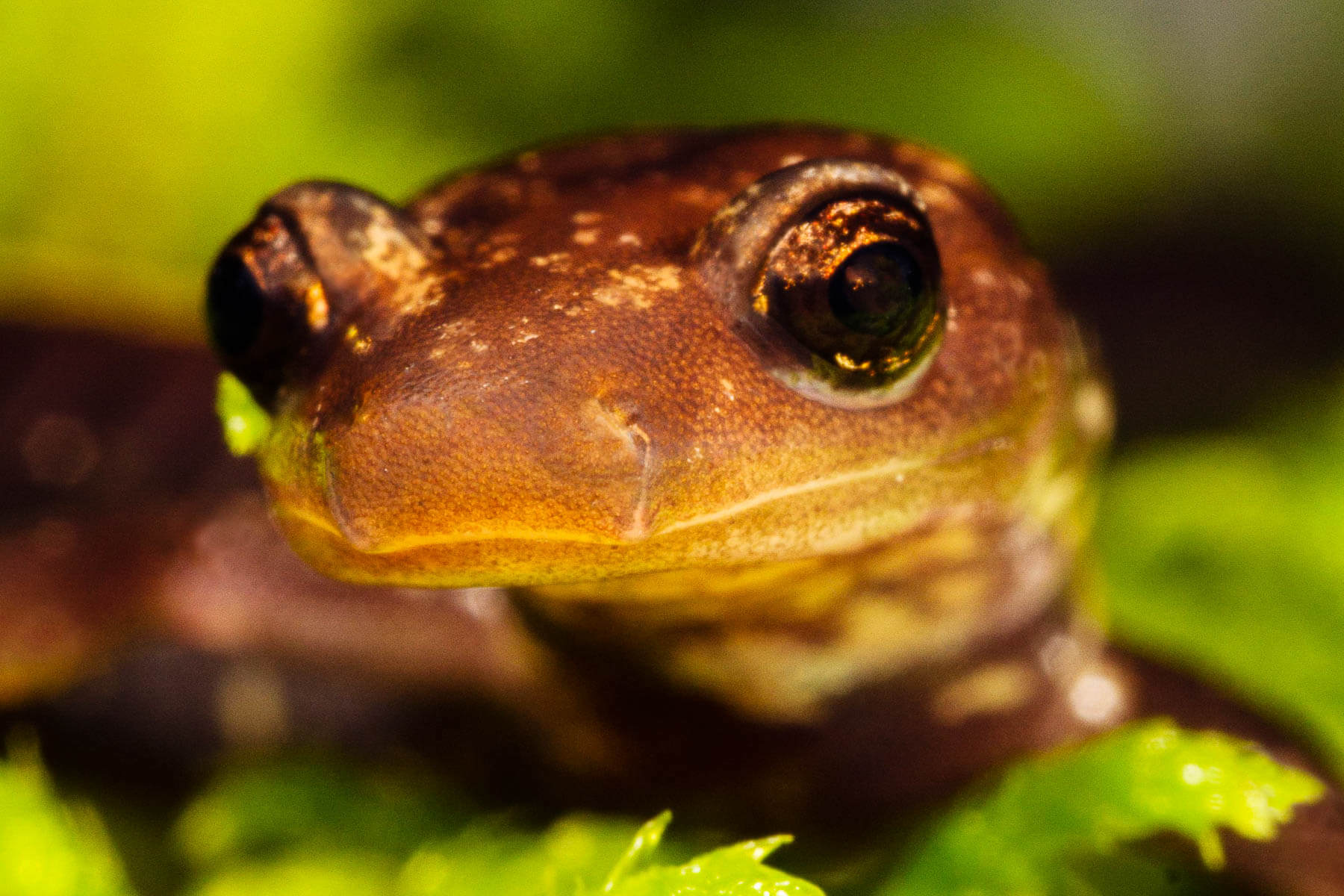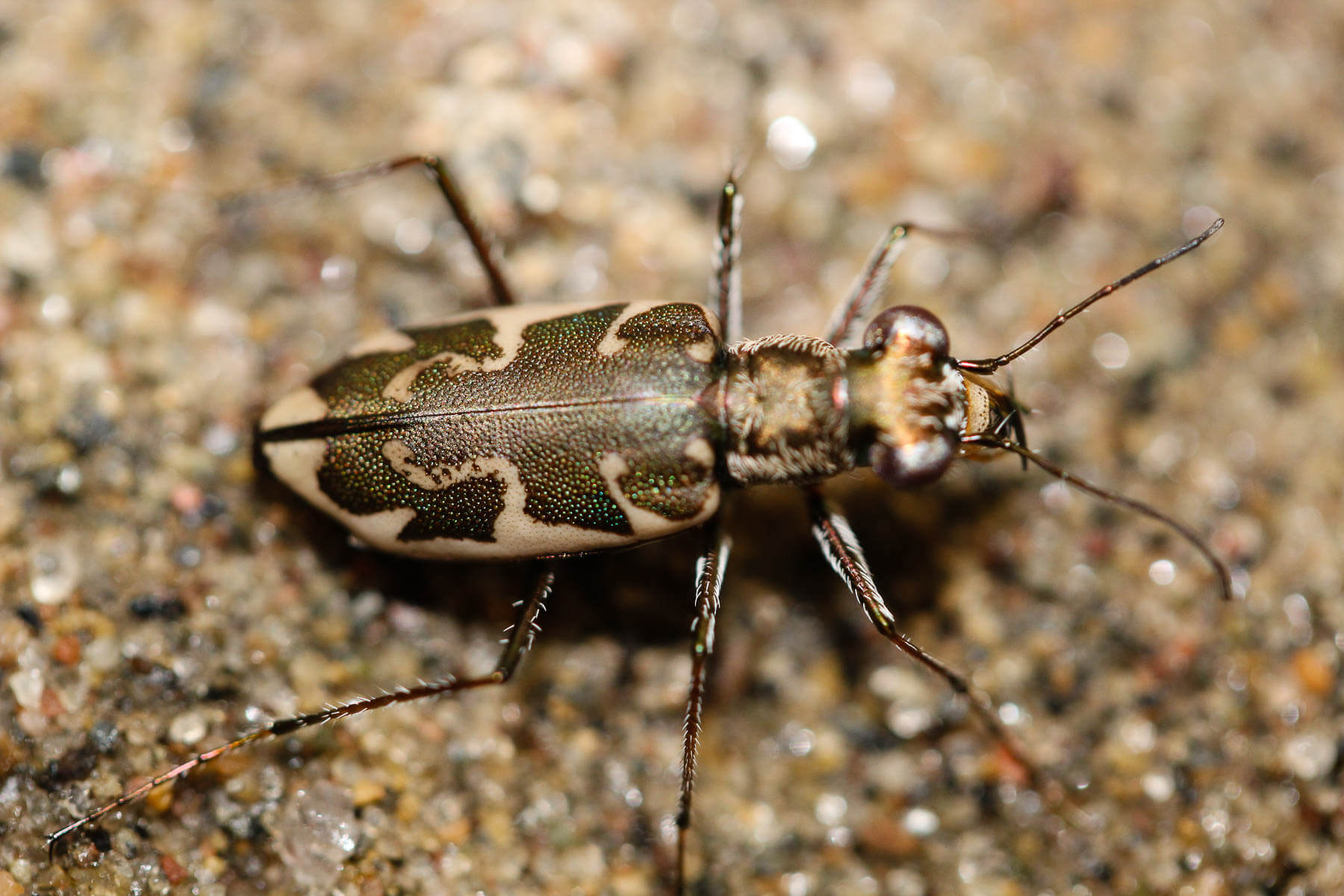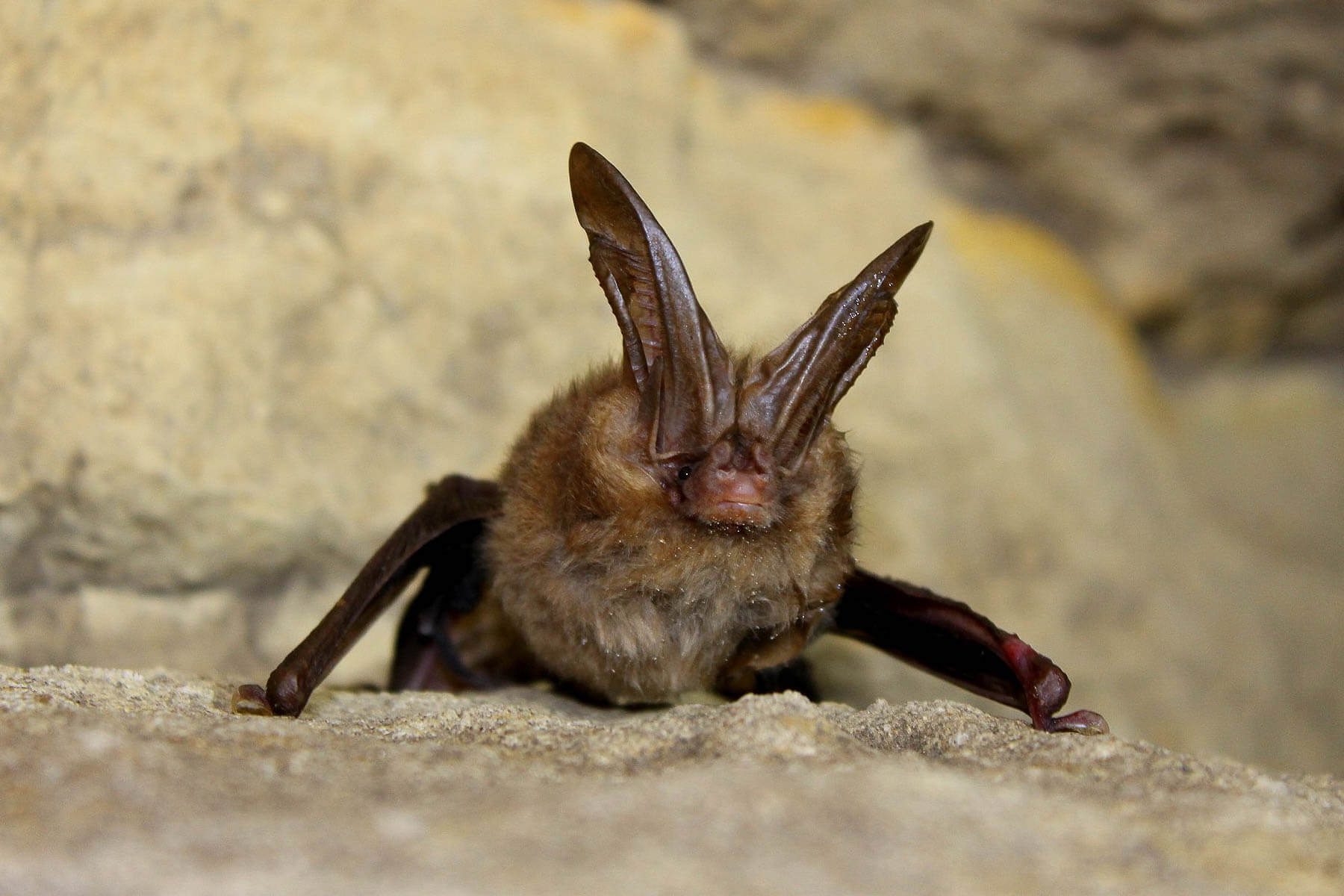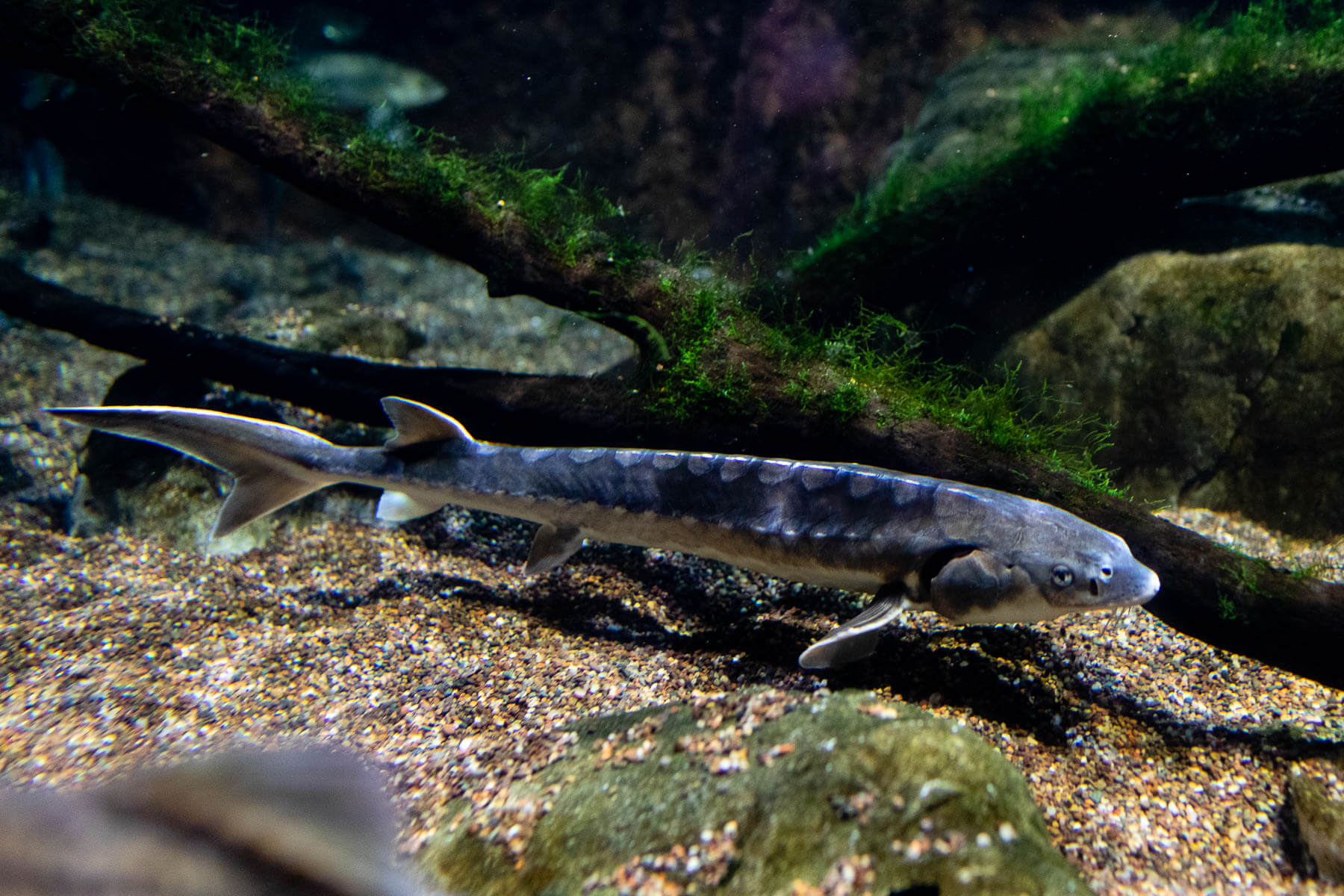Five endangered species that live in the Chesapeake Bay region

Since 1973, the Endangered Species Act has served as a way to protect plants and animals that are in danger of becoming extinct. More than 2,300 species are listed as endangered or threatened on the Endangered Species List, several of which depend on the unique habitats found in the Chesapeake Bay region to survive.
Shenandoah salamander

This small, woodland amphibian is known to live in just three mountains, all of which—as evidenced by the salamander’s name—lie within the boundaries of Shenandoah National Park in Virginia. The Shenandoah salamander used to be more widely distributed, but competition with redback salamanders has confined the Shenandoah salamander to the steep, rocky, north-facing slopes of Hawksbill Mountain, The Pinnacles and Stony Man Mountain.
The species’ small range and limited habitat led it to be federally listed as endangered in 1989. Experts are working to monitor the abundance of Shenandoah salamanders, minimize the effects park activities have on the amphibians and understand the potential impacts of warming temperatures on this high-elevation species. Since this salamander is endangered, it is illegal to try and capture or disturb this rare species or its habitat.
Puritan tiger beetle

The Puritan tiger beetle is only found in two regions in the world: the Connecticut River Valley in New England and along the Chesapeake Bay in Maryland. These insects live in naturally eroding cliffs and sandy beaches where there is little or no vegetation. They are a key to the food web in these habitats; eating other insects and crustaceans and serving as prey for insects and birds.
Since 1973, the Puritan tiger beetle has been on the federal endangered species list due to habitat loss. In 2010, there were only about 5,000 Puritan tiger beetles left and roughly 4,500 were found in Maryland.
Eroding cliffs pose danger to houses built along shorelines, but bank stabilization around cities and shoreline development is one of the most serious threats to the Puritan tiger beetle. Man made structures destroy larval habitat, but certain segmented off-shore breakwaters are one way to prevent cliffs from eroding and destroying houses while also preserving the habitat that the Puritan tiger beetle needs to survive.
Virginia big-eared bat

Named for their distinctive ears, Virginia big-eared bats are found in small populations in Virginia, West Virginia, North Carolina and Kentucky. Beginning in the early 1950s, the number of Virginia big-eared bats began to drop dramatically, falling to an estimated 3,500 bats when the species was federally listed as endangered in 1979.
Their decline has been primarily attributed to human disturbance; however, protection of cave roosts has helped big-eared bat numbers to increase. In 2003, a study was conducted on Virginia big eared bats and the total population was estimated at around 20,000 bats. However, white nose syndrome—a disease estimated to have killed nearly six million bats since 2007—poses an emerging threat: in 2010, cases of white nose syndrome were found in West Virginia’s Hellhole Cave, which is home to almost half of all Virginia big-eared bats.
Dwarf wedge mussel

This small freshwater mussel lives along the bottoms of rivers and creeks ranging from New Hampshire to North Carolina. To survive, dwarf wedge mussels rely on healthy freshwater streams that include minimal sediment, a stable stream bed and plenty of dissolved oxygen. However, rapid land development has led to degraded water quality in areas where the mussels live, causing populations to decline.
Dwarf wedge mussels also rely on just a handful of host fish species for dispersal, which has limited their ability to relocate to healthier waterways. In 1990, the species was federally listed as endangered. Scientists continue to monitor populations of the mussels and their changing habitat conditions to aid in the species’ recovery.
Sturgeon

Both the Atlantic sturgeon and the smaller shortnose sturgeon are native to the Chesapeake Bay, and both are federally listed as endangered species. Experts estimate these prehistoric fish have existed for more than 120 million years and have lived in the Bay region for at least 70 million years.
Once an abundant source of food for local residents, harvest pressures, barriers to migration and poor water quality caused this species to become increasingly rare. In recent years, however, researchers have observed more of the elusive fish in the Bay and are working to boost their knowledge of sturgeon behavior and habitat needs.
Recovery is possible
Despite the uncertain future that faces these and other endangered species, much work has been done to aid in the recovery of plants and animals on the Endangered Species List. The iconic bald eagle, for instance, recovered enough to be removed from the federal list of endangered species in 2007, and the reclusive Delmarva fox squirrel was removed from the list in 2015. Scientists and experts continue to work toward protecting and supporting these irreplaceable species.

Comments
i love animals but you could had added more animals its still really good.
it is so great to learn about the animalis
Good work! I am a student and I learned so much!!
Realy good data, one of the best sites about the bay.
This is literally the best website to research if ur doing a project on the bay
Helped so much thank you!!
(I’m in freshman in high school btw)
helped with science project thanks
good page on animals
Thank you so much this helped me on on my project
This is really confusion article but it still helped me in my project.
It is good to research and I enjoyed reading it thanks. mydudes.
there was a lot of animal that i didn't even knew!!!! good site!
This really helped my science project. Thanks!
Thank you so much for this article, it really helped my science project. Y'all know da research y'all needed to do da project. Bro this article be lit like I thought wow this was one helpful article. All my friends be like, "You some good article finders!" I'll be like ,DAMN! NICE ARTICLE
Thank you!
Your comment has been received. Before it can be published, the comment will be reviewed by our team to ensure it adheres with our rules of engagement.
Back to recent stories